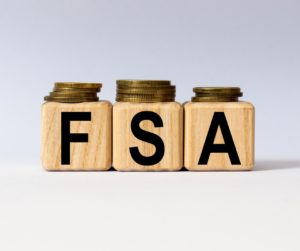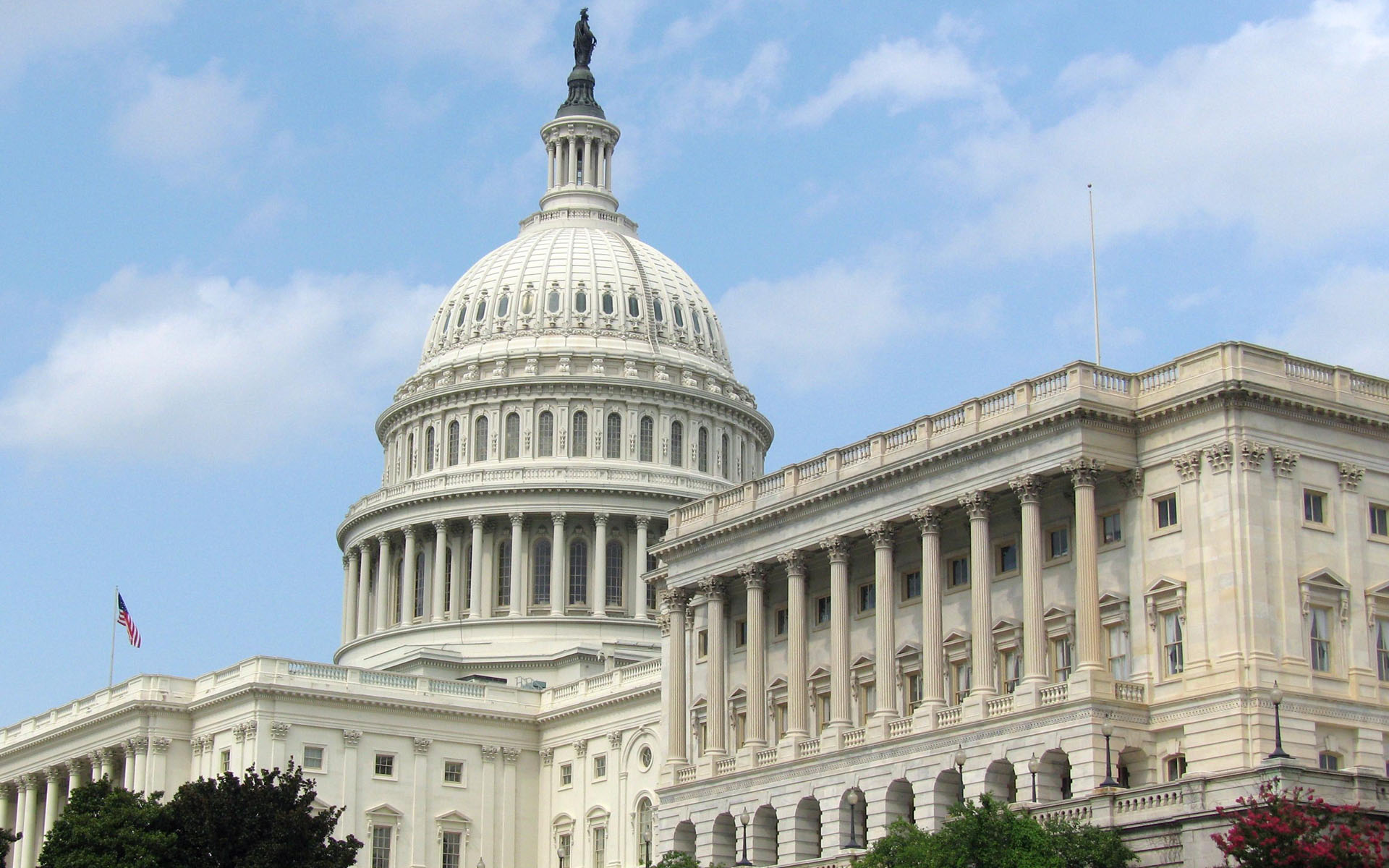
by admin | Nov 29, 2023 | Employee Benefits, Health Insurance
 If you have a health plan through a job, you can use a Flexible Spending Account (FSA) to pay for health care costs, like deductibles, copayments, coinsurance, and some drugs. They can lower your taxes.
If you have a health plan through a job, you can use a Flexible Spending Account (FSA) to pay for health care costs, like deductibles, copayments, coinsurance, and some drugs. They can lower your taxes.
How Flexible Spending Accounts work
A Flexible Spending Account (FSA, also called a “flexible spending arrangement”) is a special account you put money into that you use to pay for certain out-of-pocket health care costs.
You don’t pay taxes on this money. This means you’ll save an amount equal to the taxes you would have paid on the money you set aside.
Employers may make contributions to your FSA, but they aren’t required to.
With an FSA, you submit a claim to the FSA (through your employer) with proof of the medical expense and a statement that it hasn’t been covered by your plan. Then, you’ll get reimbursed for your costs. Ask your employer about how to use your specific FSA.
To learn more about FSAs:
Facts about Flexible Spending Accounts (FSA)
- They are limited to $3,050 per year per employer. If you’re married, your spouse can put up to $3,050 in an FSA with their employer too.
- You can use funds in your FSA to pay for certain medical and dental expenses for you, your spouse if you’re married, and your dependents.
- You can spend FSA funds to pay deductibles and copayments, but not for insurance premiums.
- You can spend FSA funds on prescription medications, as well as over-the-counter medicines with a doctor’s prescription. Reimbursements for insulin are allowed without a prescription.
- FSAs may also be used to cover costs of medical equipment like crutches, supplies like bandages, and diagnostic devices like blood sugar test kits.
- Get a list of generally permitted medical and dental expenses from the IRS.
- You can’t use a Flexible Spending Account with a Marketplace plan.
FSA limits, grace periods, and carry-overs
You generally must use the money in an FSA within the plan year. But your employer may offer one of 2 options:
- It can provide a “grace period” of up to 2 ½ extra months to use the money in your FSA.
- It can allow you to carry over up to $610 per year to use in the following year.
Your employer doesn’t have to offer these options. If it does, it can be either one of these options, but not both.
Plan ahead At the end of the year or grace period, you lose any money left over in your FSA. Don’t put more money in your FSA than you think you’ll spend within a year on things like copayments, coinsurance, drugs, and other allowed health care costs.
Originally posted on Healthcare.gov

by admin | Nov 30, 2021 | Flexible Spending Accounts
 The end of the year is drawing near which may mean you have some extra money to spend.
The end of the year is drawing near which may mean you have some extra money to spend.
No, you didn’t read that wrong. Many Americans have money in their Flexible Savings Accounts (FSAs) that they need to use up before the end of the year. FSAs provide the benefit of putting pre-tax money aside which optimizes your money. Your FSA is set up through your employer and everyone’s rules are a little different. However, most plans run January 1 – December 31. Some companies allow their employees to roll over a set amount into the new year. Checking with your HR department will help you maximize your hard-earned money.
Typically, FSA money has to be used by the end of the year but the COVID-19 relief bill gets you one more year to spend. That means you have until December 31, 2021 to spend FSA money earmarked for last year. The extension also applies for your 2021 FSA money – the credit will be available until the end of 2022.
All funds remaining in the account at the end of the grace period are forfeited according to the “use-it-or-lose-it” rule, which requires all remaining funds in an FSA to be forfeited at the end of the plan year.
If you have FSA money to spend, we’ve compiled a list of some ways to use up your hard-earned FSA dollars that you may not have thought possible:
Fill Your Medicine Cabinet
You can once again purchase over the counter medication with FSA money thanks to the CARES Act. You can stock up on first aid kits or other items that don’t require a prescription such as:
- Bandages
- Heating pads
- Contraceptives
- Fertility and Pregnancy Tests
- Sleep aids such as Melatonin or a sleep mask
- Motion sickness medication
- Headache medicine
- Antacids or heartburn medication
- Menstrual products
- Contact Solution
- Allergy medication
- Acne creams and cleansers
Alternative Therapies
Under IRS law, certain alternative therapies are eligible for reimbursement. Acupuncture and chiropractic care, alternative medicinal treatments, and herbal supplements are a great way to use up your funds for the year and get a little cash back when you most need it.
Dental
Dental benefits often work differently than medical coverage. According to the American Dental Association, this benefit is often capped annually – generally between $1,000 and $2,000. If you have unused funds remaining in your FSA, now may be the time to schedule a last-minute appointment with your dentist, especially if you might need serious work down the road. This way, you can use up the funds remaining in your account by year-end and reduce your out-of-pocket expense next year.
Prescription Refills
Refilling your prescription medications at year end are a great way to use up your funds in your medical FSA. Take inventory of your prescription drugs, toss out expired ones, and make that call for a refill to your doctor or pharmacy.
Medical Equipment and Supplies
Medical equipment and supplies are eligible for reimbursement under a medical FSA. Walking aids like canes, walkers and crutches, blood pressure monitors, thermometers, and joint braces are just a few. Please note that some will require a note or prescription from your doctor.
Mileage and Other Healthcare-Related Extras
Traveling to and from any medical facility for appointments or treatment for yourself or a dependent are eligible for reimbursement under your FSA. This not only includes traveling by your own vehicle, but also by bus, train, plane, ambulance service and includes parking fees and tolls. However, transportation expenses are not eligible with a Dependent Care Flexible Spending Account (DCFSA).
Family Planning
You can put your FSA dollars to work if you are a new or soon-to-be mom on products such as pregnancy tests, fertility monitors, prenatal vitamins and breastfeeding supplies. On the flip side, condoms and other contraceptives are also FSA eligible.
Nicotine Cessation Products
If you are trying to quit smoking, you can use your FSA funds toward nicotine gum, patches, lozenges, inhalers and nasal sprays.
Dependent Care
If you have opted to contribute to a DCFSA, you can get reimbursed for day care, preschool, summer camps and non-employer sponsored before and after school programs. In addition, funds contributed to this type of FSA can be used for elderly daycare if you’re covering more than 50% your parent’s maintenance costs.
Ancestry Kits with Health Reports
Interested in learning about your heritage and how your DNA can affect your health? You are in luck! Ancestry kits like 23andMe that include health reports are typically considered FSA eligible to be reimbursed approximately 50%.
People often don’t use their FSA out of fear that they need to save it for later. However, every year $400-500 million in FSA funds is forfeited. Lost cash is never a good thing. If you still have leftover funds, consider going to the FSA Store where you can find hundreds of eligible items and pay for them with your account dollars without ever leaving your house.
This list is not an exhaustive list of ways to spend your FSA money. Check with your HR department and insurance agent if you have questions about qualified expenses.
by Johnson and Dugan | Dec 13, 2019 | Benefit Management, Compliance, Flexible Spending Accounts
California law AB1554, signed into law by Governor Newsom on August 30, 2019, describes a new requirement for employers to advise participants in a Flexible Spending Account (FSA) of claim deadlines before the end of the plan year. Per the law: “This bill would require an employer to notify, in a prescribed manner, an employee who participates in a flexible spending account of any deadline to withdraw funds before the end of the plan year.”
Two different forms must be used, one of which can be electronic. Examples of notification options are “(1) Electronic mail communication. (2) Telephone communications. (3) Text message notification. (4) Postal mail notification. (5) In-person notification.”
Incorporating the claim filing deadline in your annual FSA open enrollment communications would satisfy this requirement as long as it is provided in two forms of the suggested methods. Terminated employees must also be notified of the claim filing deadline. This could be done in exit paperwork, verbally in an exit interview or sent electronically.
A poster could also be posted in an area that is accessible to all employees and should include the annual claim filing deadline as well as the deadline to file after the last day of employment, if mid-year. Click Here for a sample poster.
Your Johnson & Dugan team can work with you to incorporate this notice in your communications and meet this new requirement.

by admin | Dec 21, 2017 | Flexible Spending Accounts, Human Resources, IRS
 As 2017 comes to a close, it’s time to act on the money sitting in your Flexible Spending/Savings Account (FSA). Unlike a Health Savings Account or HSA, pre-taxed funds contributed to an FSA are lost at the end of the year if an employee doesn’t use them, and an employer doesn’t adopt a carryover policy. It’s to your advantage to review the various ways you can make the most out of your FSA by year-end.
As 2017 comes to a close, it’s time to act on the money sitting in your Flexible Spending/Savings Account (FSA). Unlike a Health Savings Account or HSA, pre-taxed funds contributed to an FSA are lost at the end of the year if an employee doesn’t use them, and an employer doesn’t adopt a carryover policy. It’s to your advantage to review the various ways you can make the most out of your FSA by year-end.
Book Those Appointments
One of the first things you should do is get those remaining appointments booked for the year. Most medical/dental/vision facilities book out a couple of months in advance, so it’s key to get in now to use up those funds.
Look for FSA-Approved Everyday Health Care Products
Many drugstores will often advertise FSA-approved products in their pharmacy area, within a flyer, or on their website. These products are usually tagged as “FSA approved”. Many of these products include items that monitor health and wellness – like blood pressure and diabetic monitors – to everyday healthcare products like children’s OTC meds, bandages, contact solution, and certain personal care items. If you need to use the funds up before the end of the year, it’s time to take a trip to your local drugstore and stock up on these items.
Know What’s Considered FSA-Eligible
Over the last several years, the IRS has loosened the guidelines on what is considered eligible under a FSA as more people became concerned about losing the money they put into these plans. There are many items that are considered FSA-eligible as long as a prescription or a doctor’s note is provided or kept on file. Here are a few to consider:
- Acupuncture. Those who suffer from chronic neck or back pain, infertility, depression/anxiety, migraines or any other chronic illness or condition, Eastern medicine may be the way to go. Not only are treatments relatively inexpensive, but this 3,000 year old practice is recognized by the U.S. National Institute of Health and is an eligible FSA expense.
- Dental/Vision Procedures. Dental treatment can be expensive—think orthodontia and implants. While many employers may offer some coverage, it’s a given there will be out-of-pocket costs you’ll incur. And, eye care plans won’t cover the cost of LASIK, but your FSA will. So, if you’ve been wanting to correct your vision without the aid of glasses or contacts, or your needing to get that child braces, using those FSA funds is the way to go.
- Health-boosting Supplements. While you cannot just walk into any health shop and pick up performance-enhancing powder or supplements and pay with your FSA card, your doctor may approve certain supplements and alternative options if they deem it to benefit your health and well-being. A signed doctor’s note will make these an FSA-eligible expense.
- Smoking-cessation and Weight-Loss Programs. If your doctor approves you for one of these programs with a doctor’s note deeming it’s medically necessary to maintain your health, certain program costs can be reimbursed under an FSA.
Talk to Your HR Department
When the IRS loosened guidelines a few years ago, they also made it possible for participants to carry over $500 to the next year. Ask Human Resources if your employer offers this, or if they provide a grace period (March 15 of the following year) to turn in receipts and use up funds. Employers can only adopt one of these two policies though.
Plan for the Coming Year
Analyze the out-of-pocket expenses you incurred this year and make the necessary adjustments to allocate what you believe you’ll need for the coming year. Take advantage of the slightly higher contribution limit for 2018. If your company offers a FSA that covers dependent care, familiarize yourself with those eligible expenses and research whether it would be to your advantage to contribute to as well.
Flexible Spending/Saving Accounts can be a great employee benefit offering tax advantages for employees that have a high-deductible plan or use a lot of medical. As a participant, using the strategies listed above will help you make the most out of your FSA.

by admin | Dec 5, 2017 | Employee Benefits, Flexible Spending Accounts, IRS
 On November 2, 2017, House Republicans introduced a tax reform bill (H.R.1-115th Congress) called the “Tax Cuts and Jobs Act” that, if passed, would impact multiple aspects of the tax code. Many of these changes relate to employee benefit plans, particularly in relation to certain fringe benefits.
On November 2, 2017, House Republicans introduced a tax reform bill (H.R.1-115th Congress) called the “Tax Cuts and Jobs Act” that, if passed, would impact multiple aspects of the tax code. Many of these changes relate to employee benefit plans, particularly in relation to certain fringe benefits.
Dependent Care Accounts
A dependent care flexible spending account (DCFSA) is a pre-tax benefit account used to pay for eligible dependent care services. The IRS determines which expenses are eligible for reimbursement and these expenses are defined by Internal Revenue Code section 129 and the employer’s plan. Eligible DCFSA expenses include costs for adult day care centers, before and after school programs, child care, nannies, preschool, and summer day camp. Day nursing care, nursing home care, tuition for kindergarten and above, food expenses, and overnight camp are ineligible expenses. The employer determines the minimum election amount and the IRS determines the maximum election amount. The IRS sets the following annual contribution limits for a DCFSA:
- $2,500 per year for a married employee who files a separate tax return
- $5,000 per year for a married employee who files a joint tax return
- $5,000 per year for the head of household
- $5,000 per year for a single employee
The original version of the tax reform bill completely eliminated dependent care accounts. It is now reported that Representative Kevin Brady (R-Texas) has added an amendment to the bill that reverses the immediate repeal of DCFSAs, and would extend them for five more years.
Adoption Assistance
Employers may currently reimburse employees up to $13,570 (indexed) tax-free for qualified adoption expenses. This is eliminated in the bill.
Education Assistance
Employers may currently reimburse employees up to $5,250 on a tax-free basis for qualified education expenses. This is eliminated in the bill. Employers that are educational institutions can currently provide qualified tuition reductions to employees, their spouses, and dependents tax free, but this would be eliminated under the bill.
Employer Tax Deduction Impact
Under the proposed bill, employers’ corporate tax deduction credits for the following would be eliminated:
- Transportation fringe benefits
- On-premise athletic facilities
- Employer provided child care
The bill is now in markup, with the Ways and Means Committee working to draft a final bill for the House to vote on. If passed, it will be sent to the Senate to vote on.
By Danielle Capilla
Originally Published By United Benefit Advisors

 If you have a health plan through a job, you can use a Flexible Spending Account (FSA) to pay for health care costs, like deductibles, copayments, coinsurance, and some drugs. They can lower your taxes.
If you have a health plan through a job, you can use a Flexible Spending Account (FSA) to pay for health care costs, like deductibles, copayments, coinsurance, and some drugs. They can lower your taxes.


